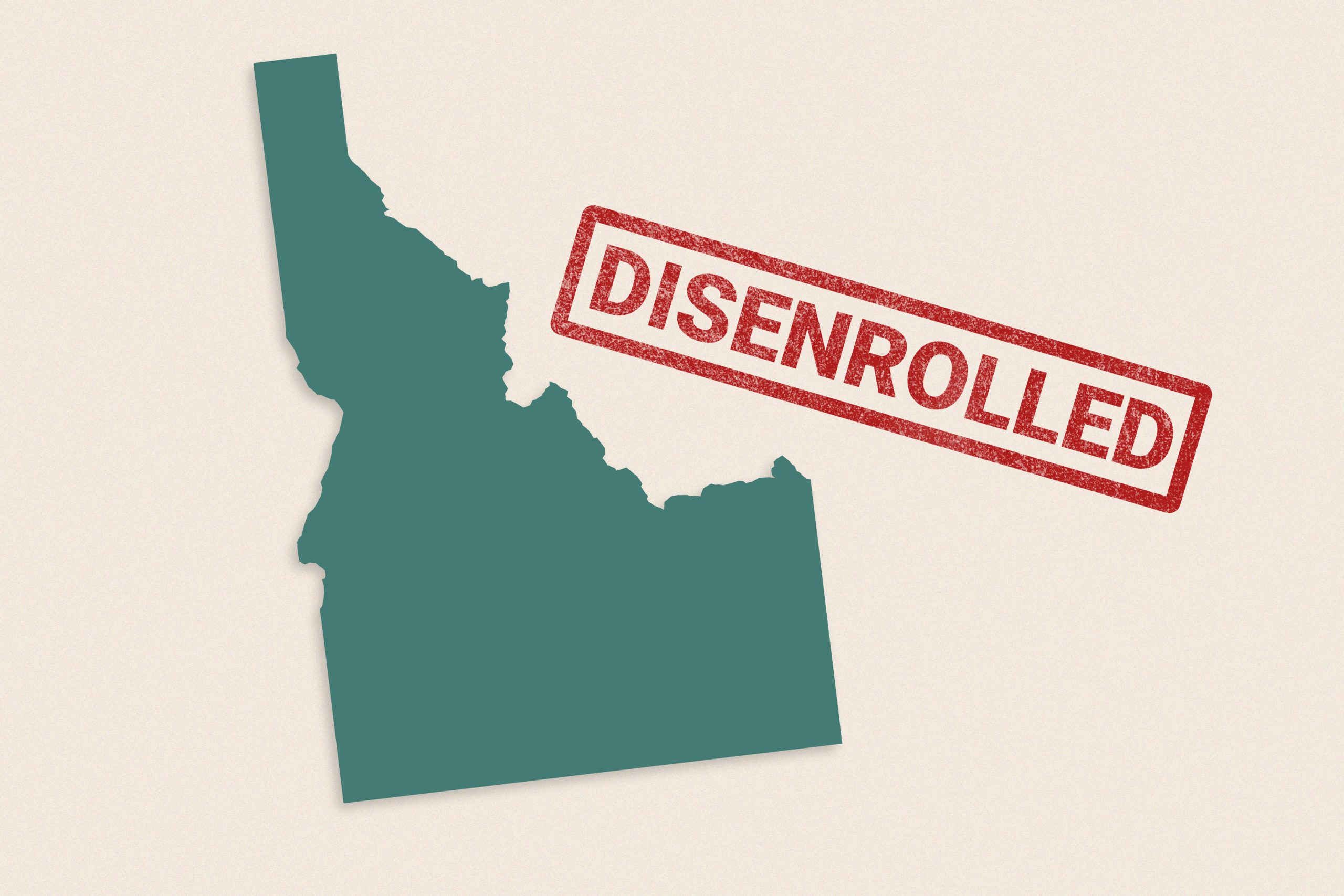During the first two years of the covid-19 pandemic, while the federal government was trying to prevent people on Medicaid from losing health coverage, Idaho dropped nearly 10,000 people from the safety-net program.
Federal law generally banned states from dropping people, and federal officials said Idaho acted improperly. Idaho officials, however, said they didn’t think they did anything wrong.
The episode, revealed in documents KHN obtained through a public records request and in interviews with state officials, offers a preview of what could soon unfold across the United States for millions of people covered through Medicaid, the federal-state health insurance program for people with low incomes.
It shows how easily state bureaucracies can disenroll people they shouldn’t be disenrolling, leaving those people in financial and medical jeopardy. It also illustrates the potential for confusion and disagreement over what procedures states should follow before cutting off anyone’s benefits, particularly when enrollees can’t be reached.
A covid relief law Congress enacted in 2020 prohibited states from removing people from Medicaid except in a few narrow circumstances, such as if an enrollee died or moved out of state.
On April 1 of this year, after the prohibition expires, states will resume removing people who no longer qualify or do not furnish needed information. That process has come to be known as the “unwinding.” Some states see the end of the mandate as a chance to quickly winnow Medicaid rolls that have grown to record levels.
Idaho Gov. Brad Little was among 25 Republican governors who told President Joe Biden in a December letter that, by keeping ineligible people on the Medicaid rolls, the mandate was “negatively affecting states.”
Idaho’s Medicaid program had nearly 450,000 enrollees as of February. The state said about 150,000 of them no longer qualified or had not been in contact with the program during the public health emergency.
Nationally, as disenrollments ramp up, many officials are predicting a mess. The Department of Health and Human Services has predicted that nearly 7 million people still entitled to Medicaid benefits will lose coverage because they fail to complete renewals or state governments won’t be able to contact them.
People may not realize they’ve been dropped until they seek care.
“The damage will be done,” said Tricia Brooks, a research professor with Georgetown University’s Center for Children and Families.
Idaho terminated Medicaid benefits for more than 9,800 beneficiaries during the pandemic after mail the state sent them was returned as undeliverable and other attempts to confirm that they still resided in Idaho failed, according to emails between the Idaho Department of Health and Welfare and the U.S. Centers for Medicare & Medicaid Services.
The emails, sent last spring and summer, detail Idaho’s rationale for the terminations, CMS’ concerns, and the state’s efforts to restore benefits.
CMS officials maintained that, when Idaho’s mailings were returned with no forwarding address or an out-of-state forwarding address, the state didn’t do enough to make contact with the beneficiaries and ensure they no longer lived in Idaho, according to the emails and state officials.
“CMS appreciates the state’s efforts to come into compliance,” Sarah O’Connor, a CMS official, wrote on Aug. 18 of last year.
In meetings with CMS, Idaho officials were told the state could not kick people off if it didn’t make “physical contact,” Shane Leach, administrator of the Division of Welfare at Idaho’s Department of Health and Welfare, recounted in correspondence with CMS.
“What they were saying early on,” Leach told KHN, “is, basically, we didn’t do enough outreach to really prove that this person was no longer in Idaho and not eligible for Medicaid.”
“My perspective is, we did our due diligence,” he added.
For the first two years of the pandemic, when Idaho received returned mail with an out-of-state forwarding address or no forwarding address — possibly indicating the enrollee no longer lived in Idaho — Leach said state officials would call them.
A lot of the calls went unanswered, he said.
“They’re really concerned about physically talking to the person or having them say, ‘Yes, I’m in another state,’” Leach said of CMS. “And so that’s where they said, ‘OK, well, you need to reinstate those individuals.’”
“We felt like we were following the guidance,” added Jennifer Palagi, a deputy director at the Idaho health department.
CMS guidance in August 2021 stated that returned mail alone was not reason enough to disenroll Medicaid beneficiaries during the public health emergency. But if CMS had issued a written version of the standard to which it was holding Idaho — in which disenrollments would be justified only if the state made contact with the enrollee — Medicaid consumer advocates and other specialists said they were unaware of it.
CMS declined to answer several questions about the Idaho situation.
“CMS is committed to working with states to ensure continuity of coverage for eligible individuals, including those for whom the Medicaid agency receives returned mail,” Bruce Alexander, director of CMS’ office of communications, said in a written statement to KHN.
According to the batch of emails obtained by KHN, Idaho in March 2022 did change the state’s procedures after discussions with CMS. By July, the state Medicaid agency had reinstated benefits for 6,400 people the state couldn’t get hold of.
In one of the emails the Idaho Medicaid agency sent to CMS last July, the state said it was reviewing the extent to which it needed to pay medical bills the program had originally rejected.
The inability to reach Medicaid enrollees has been a long-standing problem. The paperwork that agencies send people to fill out often goes unreturned. Some ends up at the wrong address. Up-to-date phone numbers or email addresses may not be available to state and county workers.
And that’s bound to become a larger problem, consumer advocates say, after the pandemic-era enrollment mandate ends this spring. On Jan. 27, CMS detailed to health agencies in all states the minimum they’ll need to do to reach a Medicaid recipient who hasn’t responded to a mailed form: Before ending benefits, a state must try to obtain up-to-date contact information and attempt to reach the person through at least two means, such as by mail, phone, email or text message, if those means are available.
Still, “there’s just a lot of variation in terms of what that could look like,” said Farah Erzouki, a senior health policy analyst for the Center on Budget and Policy Priorities, a think tank in Washington, D.C.
If any state isn’t following the rules, Georgetown University’s Brooks said, it can take months to fix the problems — all while people’s benefits hang in the balance.
“This is what we want to avoid,” Brooks said. “We don’t need to spend the next three years after the unwinding trying to get people back on who should not have been disenrolled.”
KHN (Kaiser Health News) is a national newsroom that produces in-depth journalism about health issues. Together with Policy Analysis and Polling, KHN is one of the three major operating programs at KFF (Kaiser Family Foundation). KFF is an endowed nonprofit organization providing information on health issues to the nation.
USE OUR CONTENT
This story can be republished for free (details).



